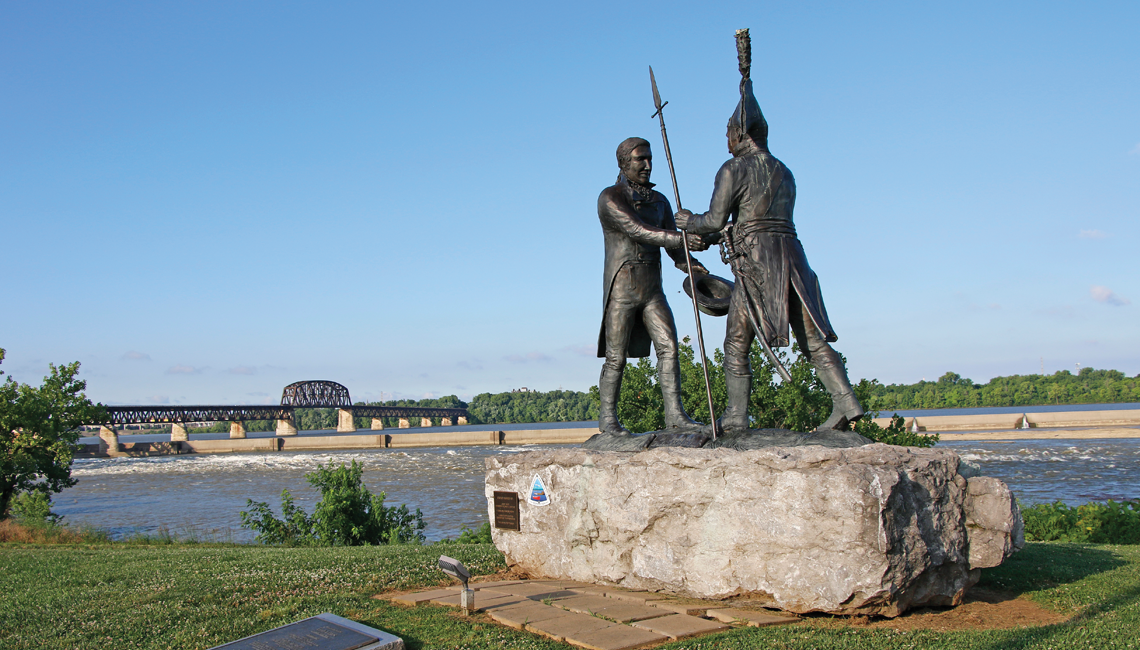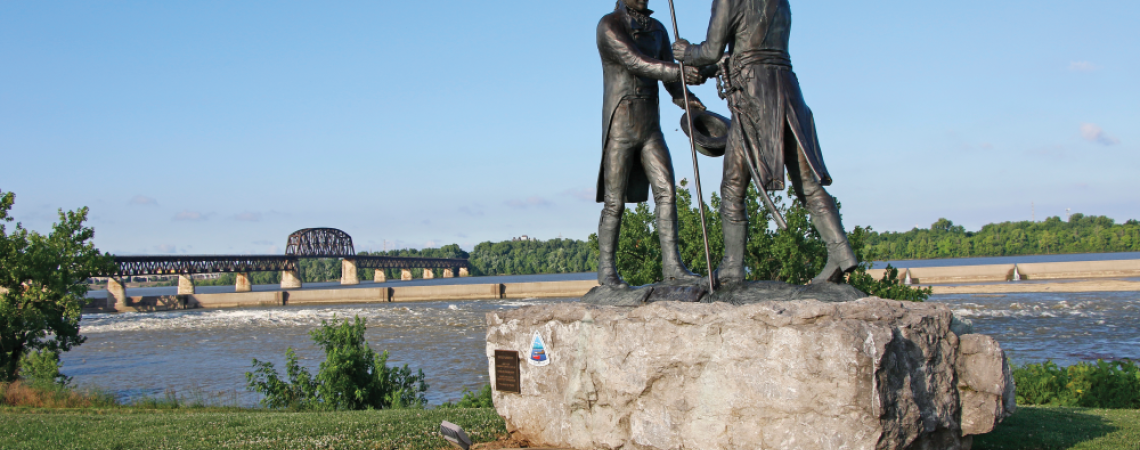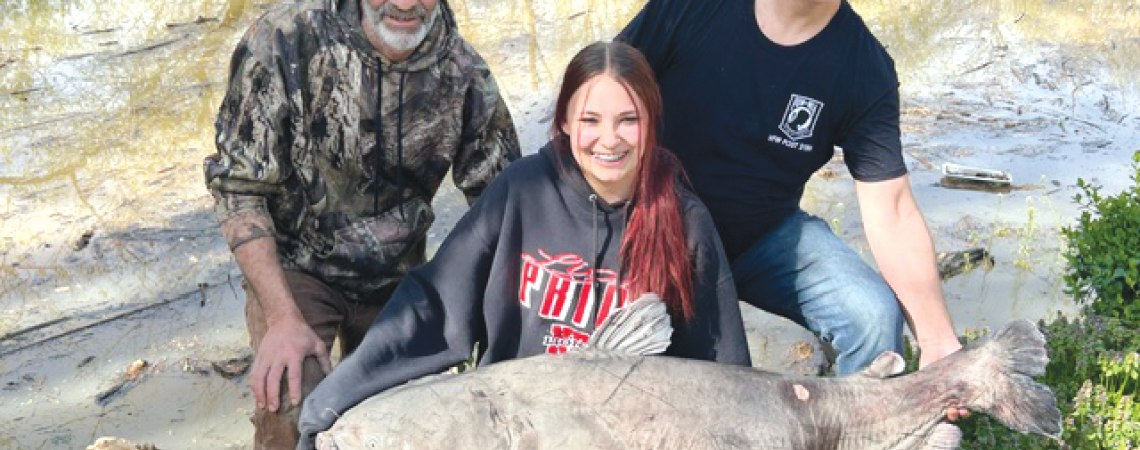The Shawnees called it Spaylaywitheepi. When French traders and trappers arrived during the 18th century, they described it as the Iroquois had: La Belle Rivière — the beautiful river. Of course, the name we most closely associate with it today derives from the Seneca word Ohiyo: “good river.”
The Ohio River flows northeast to southwest for 981 river miles — 451 miles of which delineate the state of Ohio’s borders with West Virginia and Kentucky. It begins in Pittsburgh, Pennsylvania, formed by the confluence of the Allegheny and Monongahela rivers, and ends by emptying into the Mississippi at Cairo, Illinois. (By the way, the locals pronounce Cairo as KAY-row, not KI-row.)
A statue of Meriweather Lewis and William Clark at Falls of the Ohio State Park in Clarksville, Indiana, commemorates the start of the pair’s expedition into the Northwest Territory.
Seeing the Ohio today, it’s difficult to believe that, in its original state, the river was a naturally shallow stream, varying in depth from only about 3 to 20 feet. And during annual periods of low water, such as late summer and early fall, a person could literally walk across the Ohio River on the stream’s bottom at many spots. You’d certainly get wet, possibly up to your waist or so, but the feat could be accomplished.
Of course, during other seasons of the year, the Ohio could turn into a raging torrent with flood waters easily doubling or even tripling the river’s size and depth. Scoured from its banks during such times were giant boulders, whole trees, even settlers’ log cabins ignorantly built too close to the shoreline. Not surprisingly, the Ohio River’s drainage basin is huge, gathering water from nearly 190,000 square miles across six states.
Then in 1885, construction began on the first of 19 dams (nine of which are contiguous to the state of Ohio) that raised the water level of the river significantly to expedite both trade and travel.
As a result, the Ohio River today is essentially a string of deep, slow-moving reservoirs connected by the massive locks associated with those dams, which raise and lower boats and barges from pool to pool.
Another historical aspect of the river that has changed due to the higher modern-day water level is the once-impressive Falls of the Ohio, the only natural obstruction in the river’s entire length, where, on October 4, 1803, Meriwether Lewis met William Clark to begin their famous expedition westward.
Located at Louisville, Kentucky, the “falls” were not a vertical drop like Niagara Falls, but a 2.5-mile-long series of treacherous, rock-filled rapids that dropped 26 feet from start to finish. Unfortunately for river lovers, most of the original falls are now under water.
A state-of-the-art interpretive center, located on the Indiana side of the river at Falls of the Ohio State Park in Clarksville, does an excellent job of explaining the changes and is definitely worth a visit.
Home of monsters
One of the aspects of the Ohio River that has not changed through the years is the size of its trophy catfish. Although there may not be as many as during pioneer times, they are just as big and heavy.
In fact, just this year, on April 7, 15-year-old Jaylynn Parker of New Richmond, Ohio, caught a blue catfish from Twelve Mile Creek, a tributary of the Ohio River, that weighed a whopping 101.11 pounds — besting the previous state record by more than 5 pounds. The giant cat, which measured nearly five feet in length (56.5 inches) with a girth of 39.5 inches, was kept alive, weighed on a certified scale, then released.
Before Jaylynn landed hers, the record had been held by Chris Rolph of Williamsburg, Ohio, who caught his fish from the Ohio River near Cincinnati on June 11, 2009.
W.H. “Chip” Gross is Ohio Cooperative Living’s outdoors editor. Email him with your outdoors questions at whchipgross@gmail.com.











